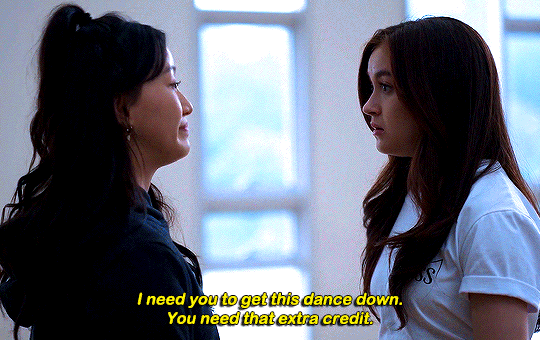#/ Reach:
Explore tagged Tumblr posts
Text
Subpoena Ad Testificandum: Legal Significance and Functions
The Legal Significance and Function of Subpoena Ad Testificandum Definition and Historical Background Legal Framework1. Issuance 2. Service 3. Scope and Relevance 4. Jurisdictional Reach Practical Challenges in Enforcement Enforcement and Consequences of Non-Compliance with Subpoena Ad Testificandum1. Mechanisms of Enforcement 2. Legitimate Grounds for Non-Compliance 3. Consequences of Non-Compliance 4. The Role of Privilege and Fundamental Rights 5. Ethical Considerations in Enforcement Implications of Subpoena Ad Testificandum in the Legal Process1. Fact-Finding: The Cornerstone of Judicial Determinations 2. Accountability: Reinforcing the Integrity of the Judicial Process 3. Access to Justice: Facilitating Equitable Participation 4. Broader Legal and Societal Implications 5. Challenges and Balancing Considerations Challenges and Ethical Considerations Conclusion The Legal Significance and Function of Subpoena Ad Testificandum A subpoena ad testificandum is a vital instrument in the judicial process, enabling courts to ensure the presence of witnesses whose testimony is crucial to the adjudication of legal disputes. Its origins lie in the Latin phrase meaning "under penalty to testify," encapsulating its role as a mandatory summons compelling individuals to appear before a court or other legal authority to provide oral testimony. This essay delves into the historical background, legal foundations, enforcement mechanisms, and broader implications of this subpoena within the justice system.

Definition and Historical Background A subpoena ad testificandum specifically obligates a witness to testify, distinguishing it from other forms of subpoenas, such as a subpoena duces tecum, which requires the production of documents or evidence. Rooted in common law traditions, this type of subpoena evolved to address the inherent need for live testimony in legal proceedings. Historically, it emerged as a critical tool for ensuring fair trials, reinforcing the principle that the presence of firsthand witnesses is indispensable for the pursuit of justice. Legal Framework The legal framework governing the issuance and execution of a subpoena ad testificandum establishes the procedural and substantive rules ensuring its effective use in judicial processes. Although specific laws vary by jurisdiction, the framework generally reflects principles of due process, relevance, and fairness. This section provides a detailed analysis of its key components. 1. Issuance The process begins with the issuance of the subpoena, a formal command requiring the recipient to appear and provide testimony. Key elements include: - Authorized Entities: Subpoenas are typically issued by: - Courts: Judges or court clerks formally issue subpoenas during litigation or trials. - Attorneys: In many jurisdictions, attorneys involved in litigation may issue subpoenas on behalf of the court as part of their discovery efforts. This empowers parties to gather necessary testimony without overburdening the judiciary. - Requirements for Issuance: The issuing party must ensure that the subpoena complies with the applicable procedural rules, including: - Identifying the witness clearly. - Stating the specific date, time, and location of appearance. - Explaining the purpose of the testimony and its relevance to the case. - Judicial Oversight: In sensitive cases or where significant burdens are imposed, judicial approval may be required to ensure the subpoena is justified and does not infringe upon protected rights. 2. Service Once issued, the subpoena must be served upon the individual in a manner that ensures adequate notice and compliance. - Traditional Service Methods: Personal delivery by a process server or law enforcement officer remains the gold standard, as it provides direct proof that the individual received the subpoena. - Modern Alternatives: Many jurisdictions now permit additional methods to accommodate logistical challenges, including: - Certified mail with proof of receipt. - Electronic delivery via email, provided there are safeguards to ensure the recipient's identity and acknowledgment. - Timing of Service: The subpoena must be served within a reasonable period before the required appearance date, giving the recipient sufficient time to prepare or seek legal recourse if necessary. - Proof of Service: Documentation of service, such as an affidavit or receipt, is typically required to confirm that the subpoena was properly delivered. 3. Scope and Relevance The testimony sought under a subpoena ad testificandum must meet stringent criteria to ensure that it serves the interests of justice without imposing undue hardship on the witness. - Relevance: The testimony must pertain directly to the facts or legal issues of the case. Irrelevant or speculative testimony can render a subpoena invalid. Courts often evaluate relevance during pre-trial motions, especially if a witness challenges the subpoena. - Proportionality: The burden placed on the witness must be proportional to the importance of the testimony. Factors considered include: - The time and effort required for compliance. - The availability of alternative sources for the information. - Privileges and Protections: Witnesses may invoke legal privileges, such as: - Attorney-client privilege. - Doctor-patient confidentiality. - Fifth Amendment protections against self-incrimination (in the U.S.). These privileges limit the scope of permissible testimony and may require courts to quash or modify the subpoena. 4. Jurisdictional Reach Subpoenas generally operate within the geographic and legal boundaries of the issuing authority, but mechanisms exist to address cross-jurisdictional challenges. - Intra-Jurisdictional Compliance: A subpoena issued within a jurisdiction is enforceable against individuals residing or located in that jurisdiction. Local rules govern its execution. - Inter-Jurisdictional Compliance: In cases where witnesses reside in different states or regions, specific frameworks ensure enforceability, such as: - Uniform Interstate Depositions and Discovery Act (UIDDA): - Adopted by many U.S. states, the UIDDA simplifies the process for litigants to obtain testimony or documents across state lines. It allows a subpoena issued in one state to be domesticated and enforced in another, subject to that state's rules. - International Subpoenas: - Obtaining testimony from witnesses in foreign jurisdictions requires adherence to international treaties, such as the Hague Evidence Convention, and local legal systems. - Limitations: Jurisdictional limits ensure that subpoenas do not overreach. Courts cannot compel testimony from individuals beyond their authority unless supported by reciprocal agreements or treaties. Practical Challenges in Enforcement The legal framework aims to strike a balance between the needs of the judicial process and the rights of the subpoenaed individual. However, practical challenges often arise: - Witness Resistance: Non-compliance may result in delays or necessitate additional enforcement actions, such as motions to compel or contempt proceedings. - Cross-Border Disputes: Variations in procedural rules and legal standards between jurisdictions can complicate the execution of subpoenas. - Technological Issues: While electronic methods improve efficiency, they raise concerns about authenticity, security, and proper acknowledgment. The legal framework surrounding subpoena ad testificandum reflects a careful interplay of procedural rigor, respect for witness rights, and the overarching goal of uncovering the truth. By ensuring fair issuance, effective service, appropriate scope, and jurisdictional flexibility, this framework maintains the subpoena's central role in the administration of justice. Its adaptability to evolving legal and technological landscapes further underscores its enduring relevance in modern legal systems. Enforcement and Consequences of Non-Compliance with Subpoena Ad Testificandum The enforcement of a subpoena ad testificandum underlines its compulsory nature, ensuring the integrity of legal proceedings. When a subpoenaed individual fails to comply without lawful justification, courts possess robust mechanisms to enforce compliance and penalize defiance. This section explores the enforcement procedures, penalties, the role of privilege, and the balance between legal obligations and individual rights. 1. Mechanisms of Enforcement Enforcement of a subpoena ad testificandum ensures that witnesses fulfill their legal duty to testify. Key mechanisms include: - Court Orders to Compel Compliance: If a witness fails to appear or refuses to testify, the issuing party may file a motion to compel compliance. This formal request asks the court to order the witness to adhere to the subpoena. - Contempt of Court: A witness who disregards a court-ordered subpoena may be held in contempt of court. Contempt proceedings involve: - Civil Contempt: Designed to compel compliance, civil contempt can lead to fines or imprisonment until the witness agrees to testify. - Criminal Contempt: Punitive in nature, criminal contempt involves penalties for defying a court’s authority, which may include fixed fines or imprisonment. - Arrest Warrants: Courts may issue a bench warrant for the arrest of a non-compliant witness. This enforcement tool is particularly reserved for instances of deliberate and willful disobedience. - Coercive Fines: Monetary penalties may be imposed to pressure witnesses into complying, with the amount scaled to the seriousness of the case and the extent of non-compliance. 2. Legitimate Grounds for Non-Compliance While non-compliance without justification invites penalties, witnesses may lawfully resist a subpoena ad testificandum under specific circumstances. Such grounds include: - Undue Burden: A subpoena that imposes unreasonable hardship—such as requiring significant travel, disproportionate time commitments, or onerous costs—may be challenged. Courts may quash or modify the subpoena to alleviate the burden. - Irrelevance or Overbreadth: Witnesses can contest subpoenas that seek testimony unrelated to the case or beyond the permissible scope of discovery. This ensures adherence to evidentiary standards and protects individuals from harassment. - Procedural Defects: Subpoenas issued improperly or served incorrectly may be invalidated. For instance, if service fails to provide sufficient notice, the subpoena may not be enforceable. - Violation of Privileges: Privileges serve as a significant legal safeguard against compelled testimony. Commonly invoked privileges include: - Attorney-Client Privilege: Protects confidential communications between lawyers and their clients, fostering open dialogue and effective representation. - Spousal Privilege: Shields private communications between spouses, reflecting societal values of marital harmony. - Privilege Against Self-Incrimination: Enshrined in the Fifth Amendment to the U.S. Constitution, this privilege prevents individuals from being compelled to provide testimony that could implicate them in criminal activity. - Other Professional Privileges: Physicians, therapists, and clergy may invoke privilege to safeguard sensitive information shared in the course of professional relationships. 3. Consequences of Non-Compliance The legal system imposes significant consequences to underscore the seriousness of failing to comply with a subpoena ad testificandum. These include: - Fines: Monetary penalties are a common response to non-compliance, with amounts varying based on the witness’s circumstances and the impact of their absence on the case. - Imprisonment: In cases of civil contempt, witnesses may face imprisonment until they agree to testify. For criminal contempt, sentences are typically fixed and punitive. - Adverse Inferences: In civil cases, a witness’s failure to testify may lead courts to draw adverse inferences against the non-compliant party, particularly if the testimony was expected to favor their position. - Professional Consequences: For professionals, such as lawyers or doctors, non-compliance with a subpoena can lead to disciplinary actions, including fines, license suspensions, or disbarment. 4. The Role of Privilege and Fundamental Rights The enforcement of subpoenas must balance the state’s interest in compelling testimony with the witness’s rights and privileges. This interplay ensures that the legal process remains fair and respects individual freedoms. - Balancing Justice and Rights: Courts carefully evaluate claims of privilege or hardship to avoid infringing on constitutional protections. For example: - In criminal cases, compelling testimony that violates the privilege against self-incrimination is unconstitutional unless immunity is granted. - In civil cases, courts may impose protective orders to limit the scope of testimony while safeguarding privileged information. - Quashing Subpoenas: Witnesses may file motions to quash a subpoena on grounds such as undue burden, irrelevance, or privilege. Judges assess these motions to ensure subpoenas do not violate legal principles or procedural fairness. - Conflicts in Privilege: Disputes over privilege often arise in complex cases. For instance, a claim of attorney-client privilege may conflict with the opposing party’s need for critical evidence. Courts resolve such conflicts by conducting in-camera reviews (private judicial examination of evidence) to determine whether the privilege applies. 5. Ethical Considerations in Enforcement The enforcement of subpoenas must adhere to ethical standards, reflecting the judiciary’s commitment to fairness and justice: - Protection of Vulnerable Witnesses: Courts take extra measures to protect minors, victims of trauma, or individuals with disabilities from undue stress or harm during testimony. - Transparency and Accountability: Enforcement mechanisms must remain transparent to preserve public trust in the judicial process. Arbitrary or excessive penalties undermine the legitimacy of the court’s authority. - Use of Discretion: Judges exercise discretion in determining appropriate consequences, ensuring proportionality between the non-compliance and the imposed sanctions. The enforcement of a subpoena ad testificandum is a cornerstone of legal systems worldwide, ensuring that witnesses fulfill their obligation to testify while balancing individual rights. By imposing meaningful consequences for non-compliance and respecting privileges and procedural fairness, courts maintain the integrity of the judicial process. As legal systems evolve, they continue to adapt enforcement mechanisms to address new challenges, including cross-jurisdictional issues and technological advancements, ensuring that justice remains accessible, equitable, and effective. Implications of Subpoena Ad Testificandum in the Legal Process The subpoena ad testificandum holds profound significance in the legal system, serving as a vital instrument for ensuring the effective administration of justice. Its implications extend across multiple dimensions, enhancing the judiciary's ability to ascertain facts, promote accountability, and uphold equitable access to justice. This section explores these implications in detail, emphasizing the critical role of compelled testimony in the legal process. 1. Fact-Finding: The Cornerstone of Judicial Determinations One of the primary purposes of a subpoena ad testificandum is to ensure that courts and other adjudicatory bodies have access to firsthand accounts that are critical for fact-finding. This function supports the foundational principle of justice: decisions should be based on truth and evidence rather than conjecture or incomplete information. - Direct Witness Accounts: Compelled testimony enables courts to hear directly from individuals with knowledge of the events in question. Such firsthand accounts often clarify ambiguities in written evidence, provide context, and reveal nuances essential for understanding the case. - Evaluation of Credibility: The presence of a witness in court allows judges, juries, or arbitrators to assess their demeanor, consistency, and credibility. Non-verbal cues, tone of voice, and body language can often reveal insights that written statements cannot. - Resolution of Disputed Facts: In contentious cases, where opposing parties present conflicting narratives, live testimony under oath helps resolve disputes by shedding light on critical details. - Supplementing Documentary Evidence: While documents, digital records, and physical evidence play an important role in modern litigation, they often require explanation or contextualization. Witness testimony bridges gaps, clarifies ambiguities, and strengthens the evidentiary foundation of a case. 2. Accountability: Reinforcing the Integrity of the Judicial Process The subpoena ad testificandum is not merely a procedural tool but a mechanism for fostering accountability within the legal system. By compelling witnesses to testify under oath, it strengthens the truth-seeking process and deters falsehoods. - Oath and Perjury Penalties: Witnesses are required to testify truthfully under the penalty of perjury, which serves as a powerful deterrent against dishonesty. This legal obligation promotes transparency and ensures that the evidence presented is as reliable as possible. - Checks on Power and Influence: Subpoenas can compel testimony from individuals who might otherwise be reluctant to participate, including powerful figures or entities. This capability helps prevent abuse of power and ensures that no individual or organization is beyond the reach of justice. Read the full article
0 notes
Photo

PORTO ROCHA
894 notes
·
View notes
Photo

🧀🥪🌶️🥭 The Ravening War portraits 🧀🥪🌶️🥭
patreon * twitch * shop
[ID: a series of digitally illustrated portraits showing - top left to bottom right - Bishop Raphaniel Charlock (an old radish man with a big red head and large white eyebrows & a scraggly beard. he wears green and gold robes with symbols of the bulb and he smirks at the viewer) Karna Solara (a skinny young chili pepper woman with wavy green hair, freckled light green skin with red blooms on her cheeks. she wears a chili pepper hood lined with small pepper seeds and stares cagily ahead) Thane Delissandro Katzon (a muscular young beef man with bright pinkish skin with small skin variations to resemble pastrami and dark burgundy hair. he wears a bread headress with a swirl of rye covering his ears and he looks ahead, optimistic and determined) Queen Amangeaux Epicée du Peche (a bright mango woman with orange skin, big red hair adorned with a green laurel, and sparkling green/gold makeup. she wears large gold hoop earrings and a high leafy collar) and Colin Provolone (a scraggly cheese man with waxy yellow skin and dark slicked back hair and patchy dark facial hair. he wears a muted, ratty blue bandana around his neck and raises a scarred brow at the viewer with a smirk) End ID.)
#trw#the ravening war#dimension 20#acoc#trw fanart#ttrpg#dnd#bishop raphaniel charlock#karna solara#thane delissandro katzon#queen amangeaux epicee du peche#colin provolone
2K notes
·
View notes
Photo

One of my favorites by Paul Lehr, used as a 1971 cover to "Earth Abides," by George R. Stewart. It's also in my upcoming art book!
1K notes
·
View notes
Quote
もともとは10年ほど前にTumblrにすごくハマっていて。いろんな人をフォローしたらかっこいい写真や色が洪水のように出てきて、もう自分で絵を描かなくて良いじゃん、ってなったんです。それで何年も画像を集めていって、そこで集まった色のイメージやモチーフ、レンズの距離感など画面構成を抽象化して、いまの感覚���アウトプットしています。画像の持つ情報量というものが作品の影響になっていますね。
映画『きみの色』山田尚子監督×はくいきしろい対談。嫉妬し合うふたりが語る、色と光の表現|Tokyo Art Beat
156 notes
·
View notes
Photo










#thistension
XO, KITTY — 1.09 “SNAFU”
#xokittyedit#tatbilbedit#kdramaedit#netflixedit#wlwedit#xokittydaily#asiancentral#cinemapix#cinematv#filmtvcentral#pocfiction#smallscreensource#teendramaedit#wlwgif#kitty song covey#yuri han#xo kitty#anna cathcart#gia kim#~#inspiration: romantic.#dynamic: ff.
1K notes
·
View notes
Photo



No one wants to be here and no one wants to leave, Dave Smith (because)
111 notes
·
View notes
Photo

The Delian League, Part 2: From Eurymedon to the Thirty Years Peace (465/4-445/4 BCE)
This text is part of an article series on the Delian League.
The second phase of the Delian League's operations begins with the Hellenic victory over Mede forces at Eurymedon and ends with the Thirty Years Peace between Athens and Sparta (roughly 465/4 – 445/4 BCE).The Greek triumph at Eurymedon resulted in a cessation of hostilities against the Persians, which lasted almost six years. Whether or not this peace or truce followed from some formal treaty negotiated by Cimon, son of Miltiades, remains unknown.
Nevertheless, the Greek success at Eurymedon proved so decisive, the damage inflicted on Persia so great, and the wealth confiscated so considerable that an increasing number of League members soon began to wonder if the alliance still remained necessary. The Persians, however, had not altogether withdrawn from the Aegean. They still had, for example, a sizeable presence in both Cyprus and Doriscus. They also set about to build a great number of new triremes.
REDUCTION OF THASOS & THE BATTLE OF DRABESCUS
A quarrel soon erupted between the Athenians and Thasians over several trading ports and a wealth-producing mine (465 BCE). Competing economic interests compelled the rich and powerful Thasos to revolt from the Delian League. The Thasians resisted for almost three years. When the polis finally capitulated, the Athenians forced Thasos to surrender its naval fleet and the mine, dismantle defensive walls, pay retributions, and converted the future League contributions to monetary payments: 30 talents annum. Some League members became disaffected with the Athenian reduction of Thasos. Several poleis observed the Athenians had now developed a penchant for using "compulsion." They started to see Athens acting with both "arrogance and violence." On expeditions, furthermore, the other members felt they "no longer served as equals" (Thuc. 1.99.2).
The Athenians, meanwhile, attempted to establish a colony on the Strymon river to secure timber from Macedon, which shared its borders with the west bank. The location also proved a critical strategic point from which to protect the Hellespont. The Thracians, however, repelled the League forces at Drabescus. The Athenians soon realized the threats from both Thrace and Macedon made permanent settlements in the region difficult as they were essentially continental powers, and the League fleet could not reach them easily. Designs for the region, however, would not change, and the Athenians would return there again.
The Delian League had by this time demonstrated an inherent conflict from its beginnings: on the one hand, it engaged in heroic struggles against the Mede and extended its influence, reaping enormous benefits (especially for its poorer members). On the other hand, it also suppressed its members and soon demanded obedience from them.
The League engaged from the outset in a form of soft imperialism, collecting and commanding voluntary naval contributions and tribute while Athens used those resources and led all expeditions, enforcing continued membership but also showing little or no interest to interfere with the internal mechanisms of any member polis (unless it openly rebelled).
Continue reading...
35 notes
·
View notes
Photo

PORTO ROCHA
523 notes
·
View notes
Photo

Beautiful photo of the Princess of Wales departing Westminster Abbey after attending the Commonwealth Day Service. --
#catherine elizabeth#princess catherine#princess of wales#princess catherine of wales#catherine the princess of wales#william arthur philip louis#prince william#prince of wales#prince william of wales#william the prince of wales#prince and princess of wales#william and catherine#kensington palace#british royal family
75 notes
·
View notes
Text
GENERAL MEMES: Vampire/Immortal Themed 🩸🦇🌹
↳ Please feel free to tweak them.
Themes: violence, death, blood, murder, depression/negative thoughts
SYMBOLS: ↳ Use “↪”to reverse the characters where applicable!
🦇 - To catch my muse transforming into a bat 🌞 - To warn my muse about/see my muse in the sunlight. 🩸 - To witness my muse drinking blood from a bag. 🐇 - To witness To catch my muse drinking blood from an animal. 🧔🏽 - To witness To catch my muse drinking blood from a human. 🦌 - For our muses hunt together for the first time. 🏃🏿♀️ - To see my muse using super speed. 🏋🏼♂️ - To see my muse using their super strength. 🧛🏻♂️ - To confront my muse about being a vampire. 🌕 - For my muse to lament missing the sun. ⏰ - For my muse to tell yours about a story from their long, immortal life. 🤛🏽 - To offer my muse your wrist to drink from. 👩🏿 - For my muse to reminisce about a long lost love. 👩🏽🤝👩🏽 - For your muse to look exactly like my muse's lost love. 👄 - For my muse to bite yours. 👀 - For my muse to glamour/compel yours. 🧄 - To try and sneakily feed my muse garlic to test if they're a vampire. 🔗 - To try and apprehend my muse with silver chains. 🔪 - To try and attack my muse with a wooden stake. 👤 - To notice that my muse doesn't have a reflection. 🌹 - For my muse to turn yours into a vampire. 🌚 - For my muse and yours to spend time together during the night. 🧛🏼♀️ - For my muse to tell yours about their maker/sire.
SENTENCES:
"I've been alive for a long time [ name ], I can handle myself." "I'm over a thousand years old, you can't stop me!" "Lots of windows in this place, not exactly the greatest place for a vampire." "Do you really drink human blood? Don't you feel guilty?" "Vampires are predators, [ name ] hunting is just part of our nature, you can't change that." "You just killed that person! You're a monster!" "Tomorrow at dawn, you'll meet the sun [ name ]." "Can you make me like you?" "Do you really want to live forever?" "You say you want to live forever, [ name ], but forever is a long time, longer than you can imagine." "What was it like to live through [ historic event / time period ]?" "Did people really dress like that when you were young?" "What were you like when you were human?" "We’re vampires, [ name ], we have no soul to save, and I don’t care." "How many people have you killed? You can tell me, I can handle it." "Did you meet [ historic figure ]?" "Everyone dies in the end, what does it matter if I... speed it along." "Every time we feed that person is someone's mother, brother, sister, husband. You better start getting used to that if you want to survive this life." "[ she is / he is / they are ] the strongest vampire anyone has heard of, no one knows how to stop them, and if you try you're going to get yourselves killed." "Vampire hunters are everywhere in this city, you need to watch your back." "Humans will never understand the bond a vampire has with [ his / her / their ] maker, it's a bond like no other." "Here, have this ring, it will protect you from the sunlight." "I get you're an immortal creature of the night and all that, but do you have to be such a downer about it?" "In my [ centuries / decades / millennia ] of living, do you really think no one has tried to kill me before?" "Vampires aren't weakened by garlic, that's a myth." "I used to be a lot worse than I was now, [ name ], I've had time to mellow, to become used to what I am. I'm ashamed of the monster I was." "The worst part of living forever is watching everyone you love die, while you stay frozen, still, constant." "I've lived so long I don't feel anything any more." "Are there more people like you? How many?" "Life has never been fair, [ name ], why would start being fair now you're immortal?" "You want to be young forever? Knock yourself out, I just hope you understand what you're giving up." "You never told me who turned you into a vampire. Who were they? Why did they do it?" "I could spend an eternity with you and never get bored." "Do you really sleep in coffins?" "There are worse things for a vampire than death, of that I can assure you [ name ]." "You need to feed, it's been days. You can drink from me, I can tell you're hungry." "The process of becoming a vampire is risky, [ name ], you could die, and I don't know if I could forgive myself for killing you." "I'm a vampire, I can hold a grudge for a long time, so believe me when I say I will never forgive this. Never." "You were human once! How can you have no empathy?" "You don't have to kill to be a vampire, but what would be the fun in that." "You can spend your first years of immortality doing whatever you want to whoever you want, but when you come back to your senses, it'll hit you harder than anything you've felt before." "One day, [ name ], everything you've done is going to catch up to you, and you're never going to forgive yourself." "Stop kidding yourself, [ name ], you're a vampire, a killer, a predator. You might as well embrace it now because you can't keep this up forever." "You can't [ compel / glamour ] me, I have something to protect me." "When you've lived as long as me, there's not much more in life you can do." "You want me to turn you? You don't know what you're asking me to do." "You really have to stop hissing like that, it's getting on my nerves." "I'm going to drive this stake through your heart, [ name ], and I'm going to enjoy it."
#ask meme#symbol meme#roleplay sentence meme#sentence starter meme#rp sentence prompts#vampire ask meme#ask box#ask memes#vampires#tw : blood#tw: violence#tw: death#tw: depression#tw: vampires#tw: murder
154 notes
·
View notes
Quote
よく「発明は1人でできる。製品化には10人かかる。量産化には100人かかる」とも言われますが、実際に、私はネオジム磁石を1人で発明しました。製品化、量産化については住友特殊金属の仲間たちと一緒に、短期間のうちに成功させました。82年に発明し、83年から生産が始まったのですから、非常に早いです。そしてネオジム磁石は、ハードディスクのVCM(ボイスコイルモーター)の部品などの電子機器を主な用途として大歓迎を受け、生産量も年々倍増して、2000年には世界で1万トンを超えました。
世界最強「ネオジム磁石はこうして見つけた」(佐川眞人 氏 / インターメタリックス株式会社 代表取締役社長) | Science Portal - 科学技術の最新情報サイト「サイエンスポータル」
81 notes
·
View notes
Photo


AGUST D : DAECHWITA (大吹打) & HAEGEUM (解禁) ⤷ movie posters | ig ; twt (click for hi-res)
#i'm back and ready to create again :'))#bts#bangtan#yoongi#agust d#suga#userbangtan#usersky#bangtanarmynet#hyunglinenetwork#dailybts#*latest#*posters#*gfx#btsgfx#idk if i wanna do an amygdala one#that one seems too personal to edit for me#so these will do for now
704 notes
·
View notes


